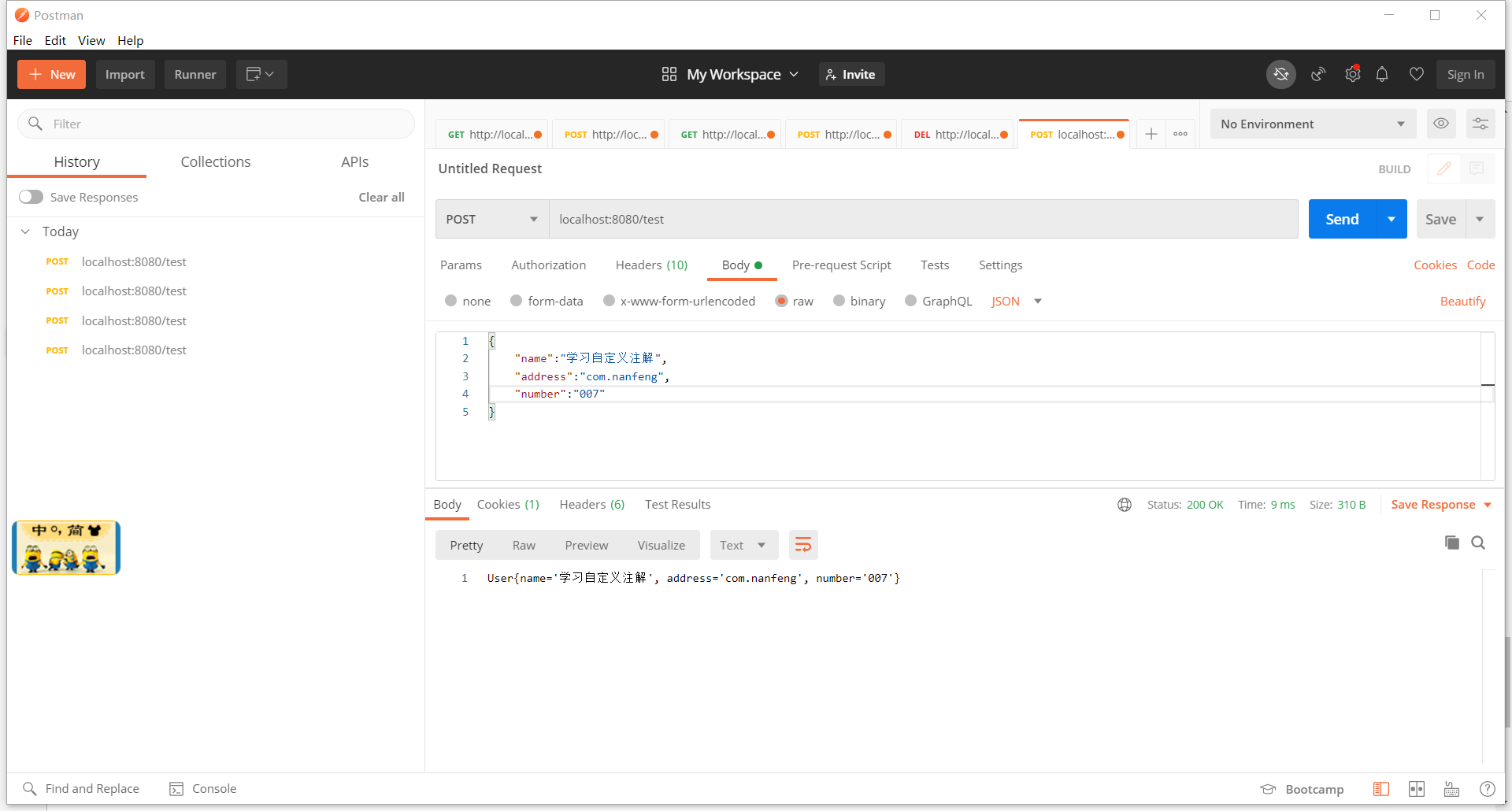First, JDK annotations are divided into two types:
1. Meta annotation (@ Target, @ Retention, @ Inherited, @ Documented)
2. Common annotations (@ Overried, @ Deprecated, @ suppresswarnings)
What is meta annotation?
It can be understood as the smallest annotation and basic annotation
What is the function of meta annotation?
Is to solve some duplicate functions
Scope of use of Java custom annotations?
Some repetitive logic can be realized through annotations, just like an encapsulated method, which can be used in some permission verification, field verification, field attribute injection, log saving and caching.
Next, let's understand the functions of the four annotations in the meta annotation
Basic elements for creating annotations
1. The access modifier must be public. If it is not written, it is public by default
2. Keyword for creating annotation: @ interface
Implementation steps of meta annotation
1. First, you need to create an annotation using the @ interface keyword
2. Create an AOP aspect to intercept the annotation, intercept the methods using the annotation, obtain the requestParam parameter above the annotation, and verify whether the required attributes exist
Demo to implement meta annotation
1. Create annotation
package com.nanfeng.annotations.anno;
/**
* @Retention Is an annotation of an annotation, called a meta annotation of an annotation
*/
import java.lang.annotation.*;
@Target({ElementType.METHOD}) //Mark that the annotation acts on the method
@Retention(RetentionPolicy.RUNTIME) //Valid at runtime
public @interface RequestLog {
/**
*Attribute values can be customized in annotations
* If the method defined in the annotation has no return value, it will return the default value of the attribute in our annotation
* Later, we need to get some parameters on the annotation, and get the default value without
*/
String[] value() default "South wind"; // For example, the default value is "south wind". If the parameter on the annotation does not get this parameter, it will return to south wind
}
2. Create an AOP slice
package com.nanfeng.annotations.aspect;
import com.nanfeng.annotations.anno.RequestLog;
import org.aspectj.lang.ProceedingJoinPoint;
import org.aspectj.lang.annotation.Around;
import org.aspectj.lang.annotation.Aspect;
import org.aspectj.lang.annotation.Pointcut;
import org.springframework.core.annotation.Order;
import org.springframework.stereotype.Component;
import org.springframework.web.context.request.RequestContextHolder;
import org.springframework.web.context.request.ServletRequestAttributes;
import javax.servlet.http.HttpServletRequest;
@Aspect
@Component
@Order(0) //Defines the priority of the execution order of beans in the Spring IOC container. The smaller the number, the higher the priority
public class RequestLogAspect {
/**
* The first * indicates any type of matching return value; You can also specify matching fixed return value types
* com.nanfeng.annotations.controller Indicates that the pointcut intercepts the classes under the controller package and does not intercept other packages
* ..Indicates the current and below,.. * indicates that all sub packets below the current match
* (..)Represents any method name, parentheses represent parameters, and two points represent any parameter type
*/
@Pointcut("execution(* com.nanfeng.annotations.controller..*(..))")
public void pointCut() {
}
/**
* @Around("pointCut() && @annotation(requestLog)") : It indicates that the method that matches the class path that satisfies the definition of pointCut() and is marked with @ RequestLog annotation will enter this aspect
*/
@Around("pointCut() && @annotation(requestLog)")
public Object arround(ProceedingJoinPoint point, RequestLog requestLog) {
// Save the value returned by the original method
Object o = null;
try {
//Gets the request input parameter of the method
Object[] requestParam = point.getArgs();
//Gets the name of the executed method
String runMethodName=point.getSignature().getDeclaringTypeName();
//Get the current request, through which you can get the url address to access the request
ServletRequestAttributes attributes = (ServletRequestAttributes) RequestContextHolder.getRequestAttributes();
String sessionId = attributes.getSessionId();
HttpServletRequest request = attributes.getRequest();
//Gets the api path of the request
String url = request.getRequestURL().toString();
String[] value = requestLog.value();//Get the parameters in the annotation
o = point.proceed();//The return value is the return value of the original method
return o;//Call the proceed method of the pointcut to indicate release
} catch (Throwable throwable) {
throwable.printStackTrace();
}
return o;//Call the proceed method of the pointcut to indicate release
}
}
3. Create entities for testing
package com.nanfeng.annotations.entity;
public class User {
private String name; // full name
private String address; // address
private String number; // number
public String getNumber() {
return number;
}
public void setNumber(String number) {
this.number = number;
}
public String getName() {
return name;
}
public void setName(String name) {
this.name = name;
}
public String getAddress() {
return address;
}
public void setAddress(String address) {
this.address = address;
}
@Override
public String toString() {
return "User{" +
"name='" + name + '\'' +
", address='" + address + '\'' +
", number='" + number + '\'' +
'}';
}
}
Controller layer
package com.nanfeng.annotations.controller;
import com.nanfeng.annotations.anno.RequestLog;
import com.nanfeng.annotations.entity.User;
import org.springframework.web.bind.annotation.PostMapping;
import org.springframework.web.bind.annotation.RequestBody;
import org.springframework.web.bind.annotation.RestController;
@RestController
public class indexController {
@PostMapping("/test")
@RequestLog
public String test(@RequestBody User user){
return user.toString();
}
}
Test with postman
